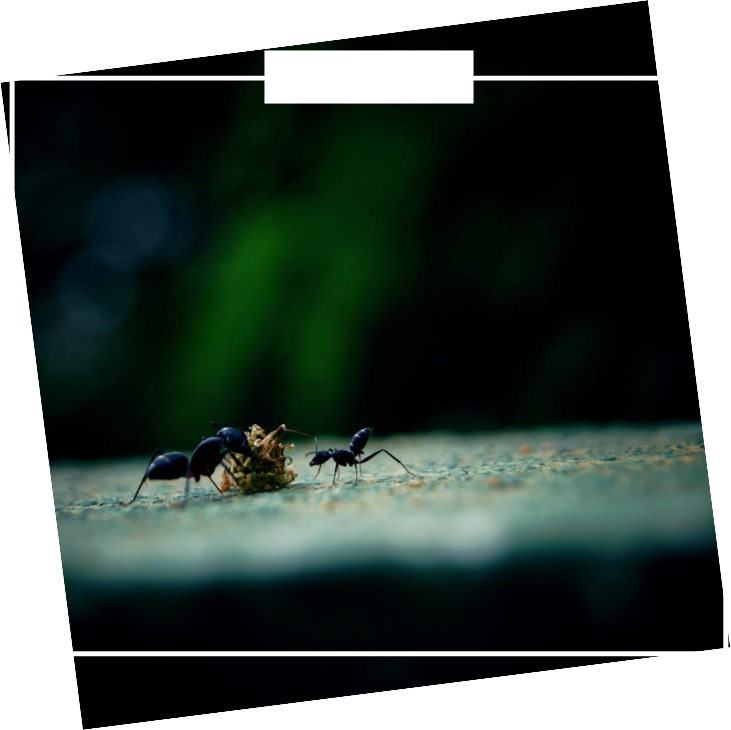Historically, ants have been a part of human lore and practical challenges, dating back to ancient civilizations. Ancient Egyptian hieroglyphs and Greek writings document the struggle against invasions in food storage areas, while in medieval times, manuscripts detail the use of boiling water and herbal concoctions to deter them, showcasing early human ingenuity in pest control.
Arizona Ant Species
Arizona's native ant species boast unparalleled uniqueness, thanks to the state's rich variety of habitats that span from dry, arid deserts to lush, green forests. This plethora of environments has bolstered an array of exceptional adaptations among the ants. Their sophisticated social structures and behaviors such as cooperative brood care and using complex communication networks, highlight their evolutionary successes in overcoming habitat challenges. The remarkable diversity and resilience of these insects render them intriguing topics of exploration for both entomologists and nature aficionados.
- Carpenter Ants are notable for their size, which can reach up to half an inch, and their black to reddish-black coloration. Unlike termites, Carpenters do not consume wood but excavate it to create their nests, leading to structural damage over time. Unlike termites, Carpenter Ants do not eat wood but remove it to make room for their nests, often leaving behind a sawdust-like byproduct.
- Fire Ants are smaller, typically about a quarter of an inch, and have a distinctive reddish-brown hue. Known for their painful stings, they are aggressive and will vigorously defend their nests, which are commonly found in open, sunny areas. Their diet is omnivorous, allowing them to hunt or scavenge a wide range of foods, from seeds to other insects.
- Harvesters stand out with their dietary preference for seeds and their larger bodies, which can measure up to half an inch. Often located in sandy soil, their nests are easy to spot due to the cleared vegetation around the entrance, and their stings can be quite painful, serving as a deterrent to predators.
- Argentine Ants are smaller, light to dark brown in color, and are known for their vast, interconnected colonies. Unlike many species that are territorial, Argentines form super-colonies, expanding aggressively and displacing native species. They are highly adaptable in their diet, consuming sweets, meats, and oils, which makes them a common household pest.
Beyond The Nuisance
Regardless of which type you encounter, these insects are much more than just pests. They are creatures of incredible strength, speed, and societal complexity. For example, these insects can lift objects many times their own body weight and work together in remarkable ways to overcome obstacles and secure resources. While ants holding lesser roles have relatively shorter lifespans, the queen of a colony can live for decades, outliving many other insects and even some small mammals. The worker system within a colony is a marvel of nature, with each playing a specific role that benefits the collective, from foraging and nursing to defending the nest. Even more amazing is that each individual ant is born into its role, better known as its caste, and the only ants that ever change their caste are princesses when they turn into queens.
The Perils Of DIY Control
Attempting to tackle an infestation with DIY methods often leads to frustration and failure. This is largely due to the complex nature of colonies, which can house thousands, if not millions, of members along with multiple queens. Such complexity requires targeted treatment strategies that can penetrate and dismantle the colony from within. Over-the-counter solutions, while convenient, typically offer only a superficial fix, dealing with visible ants without reaching the heart of the colony nestled deep within structures or underground.
Why Choose Green Arrow Pest Solutions
Green Arrow Pest Solutions stands out for its specialized techniques and deep understanding of the ant species prevalent in Arizona. This precision not only ensures the effective elimination of current infestations but also minimizes the chances of future invasions.
We are dedicated to providing ongoing support and maintenance, offering peace of mind to homeowners and businesses alike through comprehensive pest management solutions that keep properties ant-free. Contact us today for more information.
Frequently Asked Questions
Q1. What distinguishes Fire Ants from other ant species?
A1. Fire Ants are notorious for their aggressive behavior and painful stings, characteristics that set them apart from many other ant species. These ants, usually about a quarter of an inch in size with a distinctive reddish-brown color, defend their nests vigorously. They thrive in open, sunny areas and boast an omnivorous diet, allowing them to consume a wide range of foods, from seeds to other insects. The adaptability and aggressiveness of Fire Ants make them formidable pests in affected areas.
Q2. How do Harvester Ants contribute to their ecosystems?
A2. Harvester Ants play a pivotal role in their ecosystems, primarily through their seed collection and storage behaviors. With their larger bodies, up to half an inch, and preference for seeds, they influence the distribution and types of vegetation in their environments. Their nests, often located in sandy soil and identifiable by the cleared vegetation around the entrance, serve as key sites for seed dispersal and germination. Beyond their ecological contributions, the sting of a Harvester Ant is a potent deterrent to many predators.
Q3. Why are Carpenter Ants considered a significant threat to structures?**
A3. Carpenter Ants are known for causing structural damage by excavating wood to create their nests. Unlike termites, they do not consume wood but remove it to accommodate their colonies, which can grow to be quite large. The presence of Carpenter Ants can be identified by damaged wood that appears hollowed out and may have sawdust-like material nearby, indicative of their nesting activities. Due to their ability to weaken wooden structures silently over time, they are considered a significant pest threat to homes and buildings.

